|
This next post will dive deeper in to the Spaniel tree, to look at the 'non-flushing' group and to become more debated. These breeds are certainly related to the Spaniels, but more distant cousins than those we examined previously. We will look at 16 additional breeds, the majority of which are French, German, or from the United Kingdom. We will start with the United Kingdom and their small family grouping of setters. This may sound like an odd addition, but setters were once known as ‘setting spaniels’ and although they have been developed along a different path their lineage with flushing dogs is evident. There are only four surviving setters, the English, Gordon, Irish Red and White, and Irish (solid red). The first mention of a setting spaniel traces back to the 1620s and it seems likely that these dogs shared the same ancestry as their flushing cousins. Instead of flushing birds these dogs were trained to freeze and ‘set’ when prey was located. All four setters are believed to have been developed around the 1700s, with the Gordon possibly being the oldest. Although the Irish Setter is more well-known than the Irish Red and White the latter has existed for longer. Next we will add the breeds that the Fédération Cynologique Internationale (FCI) classifies as Continental Pointers, spaniel type (excluding the Pont-Audemer Spaniel which will be in our last post on water dogs). Remember how we discussed before that in the United States the Brittany Spaniel is no longer classified as a spaniel? That is because these dogs are all-around gundogs instead of just being used to flush prey. Aside from the Brittany there are three other French breeds, the French Spaniel, Picardy Spaniel and Blue Picardy Spaniel. The French is the oldest, having existed since at least 1600s. The Picardy and Brittany are almost as old, dating back to the 1700s. The Blue Picardy was not developed until English Setter crosses were made to some bloodlines of the Picardy in the late 1800s. Germany has three Continental spaniel-like pointers; the German Longhaired Pointer, Large Münsterländer, and Small Münsterländer. Labeling the German Longhaired Pointer as a spaniel may seem odd, as it is closely related to the other German Pointers (Shorthaired, Wirehaired and Rough Haired). However in appearance it is more setter than pointer and it is likely that the English and Gordon Setters, along with the French Spaniels were used in its development. As for the two Münsterländers, the Large began life as a color variation of the German Longhaired Pointer and the Small is linked to the Deutscher Wachtelhund. The Deutscher Wachtelhund is a fourth dog from Germany that the FCI classifies as an actual spaniel – although like the French breeds listed above the it actually works as an all-around gun dog rather than as a spaniel. This leaves only the Drentse Patrijshond, Stabyhoun, Kooikerhondje, and Nova Scotia Duck Tolling Retriever. The Drentse Patrijshond and Stabyhoun are Dutch and closely related, both recognized as Continental Pointers by the FCI (spaniel type). They are very similar to the old type of spaniels, although aside from flushing they are adapt at pointing and retrieving. The Kooikerhondje is an anomaly as the FCI recognizes them as a flushing spaniel when they, along with the Nova Scotia Duck Tolling Retriever, are actually the only breeds that are decoy dogs. Decoys will actually entice ducks and waterfowl either into nets or within range of guns rather than flushing out prey. These dogs do both have spaniel blood in their veins, and both descend from the extinct English Red Decoy Dog. Next week we will finish the Spaniel tree by adding the water dogs, which is somehow even more complicated than the non-flushing list.
3 Comments
We will continue our spaniel articles by looking at the small companion spaniels that were once known as Spaniel Gentles, kept by royalty and the wealthy. The only function these dogs had was to be spoiled - or as a bed warmer. There are three breeds in this group; the King Charles Spaniel, Cavalier King Charles Spaniel and the Continental Toy Spaniel. It is believed the oldest of these breeds is the Continental Toy Spaniel, having existed since the 1300s.
The Continental is more often known by the names the Fédération Cynologique Internationale (FCI) uses to split it into two varieties based on ear carriage, the Phalene (drop) and Papillon (erect). The Phalene is the oldest of the two types, although it is the name Papillon the breed is recognized under the American Kennel Club (AKC). France is credited with its origin but these miniaturized gundogs turned lap dogs were known throughout Europe. They were a favorite of Marie Antoinette and legend states she clutched one on her way to the guillotine. England's toy spaniel was a favorite of King Charles, a name it still carries throughout Europe, but is known as the English Toy Spaniel in the United States. Today's dog was the result of taking four similar varieties that had previously been divided by coat color and combining them into one breed standard; the Blenheim (white with red or chestnut), Ruby (reds), Prince Charles (tricolor) and King Charles (black with chestnut or tan). Some have suggested that these dogs with their shorter muzzles are actually descended from oriental breeds such as the Pug or Japanese Chin. However, it is more likely that these breeds were added to the bloodline as earlier dogs did not have shortened snouts. It was the short muzzles that led to the development of the Cavalier King Charles in the 1920s. The longer muzzle and more traditional dogs were becoming almost impossible to find, causing an American by the name of Roswell Eldridge to offer twenty-five pounds prize money to any person showing dogs with long noses at Crufts. After five years he was able to establish a breeding stock and the two were recognized as distinct breeds in the 1940s. For a moment let us return to original question of how many spaniel breeds there are. Certainly these three and the seven flushing dogs from our first post can be classified as such, each sharing ancestry that may or may not have originated in Spain, but the family tree's roots lie within Europe. From here the relations will grow more complicated and our "count" will become debated. Throughout the centuries the name spaniel has been given to more than a dozen breed of dogs, but when asked how many spaniels there are in the world of dogs that question can be hard to answer. It all depends on who you ask and which spaniels you want to count. Trying to use the title only makes it more difficult because breeds like the Tibetan Spaniel are not spaniels at all - but the little known Kooikerhondje is. To add another level of confusion the Brittany Spaniel in its homeland of France it is still known as the Epagneul Breton, but in the United States the spaniel was dropped. Why?
Perhaps we should start with what makes a spaniel a spaniel. The easiest answer would be spaniels were traditionally bred and trained to flush prey for hunters, but small companion dogs have also existed for just as long which are clearly spaniels. These dogs all share the same root ancestry and appearance, but their actual origin is unknown. Most scholars point to Spain, from the French word epagneul, but other theories involving Romans and Celts also exist. Due to the size of this question we will explore this family grouping in separate posts through over several days by looking at the early spaniels decedents both through type (appearance) as well as function. To simplify we have divided the spaniels into four groups: flushing, companion, non-flushing, and water. This specific post will explore the “true” spaniels – those that were specifically developed for flushing. There are seven breeds in this grouping, five of which hail from England. Each of these dogs descends directly from the early land spaniels and includes the English and Welsh Springers, English and American Cockers, Clumber, Sussex, and Field. These dogs are a tight grouping, beginning with the English Springer and English Cocker. These two were once so closely related that they were considered the same breed, separated only by size. Larger dogs were destined to become Springing Spaniels (also known at the time as Hawking or Starter) while their smaller littermates became Cocking Spaniels. It wasn't until the late 1800s that attempts were formally made to separate the two sizes. The English Cocker would also lead directly to the development of the Field Spaniel (due to breeders wanting a solid and slightly larger spaniel) and the American Cocker in the United States. The American Cocker is the only dog in this group that developed away from a hunting breed to become solely used as an companion. It was separated from the English Cocker by the American Kennel Club (AKC) in 1946. Ironically both of these dogs are known simply as 'Cocker Spaniel' in it's homeland, while the foreign cousin is give the title American or English. It is believed the Sussex and Clumber were created from crosses with the English Springer and hounds (the Clumber's hound addition being French rather than English). Both of these breeds came close to extinction after WWII and although they were saved their numbers have never truly recovered. Both are listed in their homeland as Vulnerable Native Breeds by the Kennel Club (KC) and the Sussex has been in the bottom ten of AKC registrations for several years. The only dog that may or not share these close relations is the Welsh Springer, which many experts believe to be older than the English breeds. It is mentioned in texts dating from the early 10th century, long before any documentation of spaniels in England. |
AuthorLisa Quibell Archives
March 2019
Categories
All
|
- Home
- Worldly Dogs Blog
-
Breeds Geographically
- Africa >
-
Asia
>
- Australia >
-
Europe
>
- Austria >
- Belgium >
- Bosnia and Herzegovina >
- Croatia >
- Czech Republic >
- Denmark >
-
England
>
- Airedale Terrier
- Basset Hound
- Beagle
- Bedlington Terrier
- Border Collie
- Border Terrier
- Bull Terrier
- Bulldog
- Bullmastiff
- Cavalier King Charles Spaniel
- Clumber Spaniel
- Curly Coated Retriever
- English Cocker Spaniel
- English Foxhound
- English Setter
- English Springer Spaniel
- English Toy Spaniel
- Field Spaniel
- Flat Coated Retriever
- Greyhound
- Harrier
- Jack Russell Terrier
- Lakeland Terrier
- Lancashire Heeler
- Manchester Terrier
- Mastiff
- Miniature Bull Terrier
- Norfolk Terrier
- Norwich Terrier
- Old English Sheepdog
- Otterhound
- Parson Russell Terrier
- Patterdale Terrier
- Pointer
- Smooth Fox Terrier
- Sporting Lucas Terrier
- Staffordshire Bull Terrier
- Sussex Spaniel
- Whippet
- Wire Fox Terrier
- Yorkshire Terrier
- Finland >
-
France
>
- Anglo-Français de Petite Vénerie
- Ariégeois
- Barbet
- Basset Artésien Normand
- Basset Bleu de Gascogne
- Basset Fauve de Bretagne
- Beagle Harrier
- Beauceron
- Berger Picard
- Bichon Frisé
- Billy
- Blue Picardy Spaniel
- Braque d'Auvergne
- Braque de l'Ariége
- Braque Du Bourbonnais
- Braque Français
- Braque Saint-Germain
- Briard
- Briquet Griffon Vendéen
- Brittany
- Chien d'Artois
- Chien Français Blanc et Noir
- Chien Français Blanc et Orange
- Chien Français Tricolore
- Dogue de Bordeaux
- French Bulldog
- French Spaniel
- Grand Anglo-Français Blanc et Noir
- Grand Anglo-Français Blanc et Orange
- Grand Anglo-Français Tricolore
- Grand Basset Griffon Vendéen
- Grand Bleu de Gascogne
- Grand Gascon-Saintongeois
- Grand Griffon Vendéen
- Great Pyrenees
- Griffon Bleu de Gascogne
- Griffon Fauve de Bretagne
- Griffon Nivernais
- Löwchen
- Petit Basset Griffon Vendéen
- Petit Bleu de Gascogne
- Petit Gascon-Saintongeois
- Picardy Spaniel
- Poitevin
- Pont-Audemer Spaniel
- Porcelaine
- Pyrenean Shepherd
- Wirehaired Pointing Griffon
-
Germany
>
- Affenpinscher
- Bavarian Mountain Hound
- Biewer Terrier
- Boxer
- Dachshund
- Deutsche Bracke
- Deutscher Wachtelhund
- Doberman Pinscher
- Eurasier
- German Longhaired Pointer
- German Pinscher
- German Rough Haired Pointer
- German Shepherd Dog
- German Shorthaired Pointer
- German Spitz
- German Wirehaired Pointer
- Giant Schnauzer
- Great Dane
- Hanoverian Hound
- Hovawart
- Jagdterrier
- Kromfohrländer
- Large Münsterländer
- Leonberger
- Miniature Pinscher
- Miniature Schnauzer
- Pomeranian
- Poodle
- Pudelpointer
- Rottweiler
- Schnauzer
- Small Münsterländer
- Weimaraner
- Westphalian Dachsbracke
- White Shepherd Dog
- Greece >
- Hungary >
- Ireland >
- Italy >
- Malta >
- Netherlands >
- Norway >
- Poland >
- Portugal >
- Romania >
- Russia >
- Scotland >
- Serbia >
- Slovakia >
- Spain >
- Sweden >
- Switzerland >
- Turkey >
- Wales >
- Other European Breeds >
-
North America
>
- Canada >
- Mexico >
-
United States
>
- Alaskan Klee Kai
- Alaskan Malamute
- American Bulldog
- American Bully
- American Cocker Spaniel
- American Eskimo Dog
- American Foxhound
- American Hairless Terrier
- American Leopard Hound
- American Pit Bull Terrier
- American Staffordshire Terrier
- American Water Spaniel
- Australian Shepherd
- Black and Tan Coonhound
- Black Mouth Cur
- Bluetick Coonhound
- Boston Terrier
- Boykin Spaniel
- Carolina Dog
- Catahoula Leopard Dog
- Chesapeake Bay Retriever
- Chinook
- English Coonhound
- English Shepherd
- Miniature American Shepherd
- Mountain Cur
- Olde English Bulldogge
- Plott Hound
- Rat Terrier
- Redbone Coonhound
- Silken Windhound
- Stephens' Cur
- Teddy Roosevelt Terrier
- Toy Fox Terrier
- Treeing Cur
- Treeing Feist
- Treeing Tennessee Brindle
- Treeing Walker Coonhound
- Other North American Breeds >
- South America >
- Alphabetical List
- Breeds By Type
-
Extinct
- African Sand Dog
- Bichon Tenerife
- Basset d'Artois
- Basset Normand
- Basset Saintongeois
- Black and Tan Terrier
- Blanquito de la Habana
- Bouvier des Moerman
- Bouvier des Paret
- Bouvier des Roulers
- Bullenbeisser
- Celtic Hound
- Céris
- Chien Blanc du Roi
- Coton de Reunion
- English Red Decoy Dog
- Grand Fauve de Bretagne
- Griffon d’Ecurie
- Hall's Heeler
- Han Dog
- Happa Dog
- Larye
- Leauvenaar
- Molossus
- Montembeouf
- Normand Hound
- Paisley Terrier
- Saint Hubert Hound
- Saintongeois Hound
- Tahltan Bear Dog
- Tesem
- Timmon's Biter
-
Kennel Clubs
- About Worldly Dogs
Worldly Dogs 2017
- Home
- Worldly Dogs Blog
-
Breeds Geographically
- Africa >
-
Asia
>
- Australia >
-
Europe
>
- Austria >
- Belgium >
- Bosnia and Herzegovina >
- Croatia >
- Czech Republic >
- Denmark >
-
England
>
- Airedale Terrier
- Basset Hound
- Beagle
- Bedlington Terrier
- Border Collie
- Border Terrier
- Bull Terrier
- Bulldog
- Bullmastiff
- Cavalier King Charles Spaniel
- Clumber Spaniel
- Curly Coated Retriever
- English Cocker Spaniel
- English Foxhound
- English Setter
- English Springer Spaniel
- English Toy Spaniel
- Field Spaniel
- Flat Coated Retriever
- Greyhound
- Harrier
- Jack Russell Terrier
- Lakeland Terrier
- Lancashire Heeler
- Manchester Terrier
- Mastiff
- Miniature Bull Terrier
- Norfolk Terrier
- Norwich Terrier
- Old English Sheepdog
- Otterhound
- Parson Russell Terrier
- Patterdale Terrier
- Pointer
- Smooth Fox Terrier
- Sporting Lucas Terrier
- Staffordshire Bull Terrier
- Sussex Spaniel
- Whippet
- Wire Fox Terrier
- Yorkshire Terrier
- Finland >
-
France
>
- Anglo-Français de Petite Vénerie
- Ariégeois
- Barbet
- Basset Artésien Normand
- Basset Bleu de Gascogne
- Basset Fauve de Bretagne
- Beagle Harrier
- Beauceron
- Berger Picard
- Bichon Frisé
- Billy
- Blue Picardy Spaniel
- Braque d'Auvergne
- Braque de l'Ariége
- Braque Du Bourbonnais
- Braque Français
- Braque Saint-Germain
- Briard
- Briquet Griffon Vendéen
- Brittany
- Chien d'Artois
- Chien Français Blanc et Noir
- Chien Français Blanc et Orange
- Chien Français Tricolore
- Dogue de Bordeaux
- French Bulldog
- French Spaniel
- Grand Anglo-Français Blanc et Noir
- Grand Anglo-Français Blanc et Orange
- Grand Anglo-Français Tricolore
- Grand Basset Griffon Vendéen
- Grand Bleu de Gascogne
- Grand Gascon-Saintongeois
- Grand Griffon Vendéen
- Great Pyrenees
- Griffon Bleu de Gascogne
- Griffon Fauve de Bretagne
- Griffon Nivernais
- Löwchen
- Petit Basset Griffon Vendéen
- Petit Bleu de Gascogne
- Petit Gascon-Saintongeois
- Picardy Spaniel
- Poitevin
- Pont-Audemer Spaniel
- Porcelaine
- Pyrenean Shepherd
- Wirehaired Pointing Griffon
-
Germany
>
- Affenpinscher
- Bavarian Mountain Hound
- Biewer Terrier
- Boxer
- Dachshund
- Deutsche Bracke
- Deutscher Wachtelhund
- Doberman Pinscher
- Eurasier
- German Longhaired Pointer
- German Pinscher
- German Rough Haired Pointer
- German Shepherd Dog
- German Shorthaired Pointer
- German Spitz
- German Wirehaired Pointer
- Giant Schnauzer
- Great Dane
- Hanoverian Hound
- Hovawart
- Jagdterrier
- Kromfohrländer
- Large Münsterländer
- Leonberger
- Miniature Pinscher
- Miniature Schnauzer
- Pomeranian
- Poodle
- Pudelpointer
- Rottweiler
- Schnauzer
- Small Münsterländer
- Weimaraner
- Westphalian Dachsbracke
- White Shepherd Dog
- Greece >
- Hungary >
- Ireland >
- Italy >
- Malta >
- Netherlands >
- Norway >
- Poland >
- Portugal >
- Romania >
- Russia >
- Scotland >
- Serbia >
- Slovakia >
- Spain >
- Sweden >
- Switzerland >
- Turkey >
- Wales >
- Other European Breeds >
-
North America
>
- Canada >
- Mexico >
-
United States
>
- Alaskan Klee Kai
- Alaskan Malamute
- American Bulldog
- American Bully
- American Cocker Spaniel
- American Eskimo Dog
- American Foxhound
- American Hairless Terrier
- American Leopard Hound
- American Pit Bull Terrier
- American Staffordshire Terrier
- American Water Spaniel
- Australian Shepherd
- Black and Tan Coonhound
- Black Mouth Cur
- Bluetick Coonhound
- Boston Terrier
- Boykin Spaniel
- Carolina Dog
- Catahoula Leopard Dog
- Chesapeake Bay Retriever
- Chinook
- English Coonhound
- English Shepherd
- Miniature American Shepherd
- Mountain Cur
- Olde English Bulldogge
- Plott Hound
- Rat Terrier
- Redbone Coonhound
- Silken Windhound
- Stephens' Cur
- Teddy Roosevelt Terrier
- Toy Fox Terrier
- Treeing Cur
- Treeing Feist
- Treeing Tennessee Brindle
- Treeing Walker Coonhound
- Other North American Breeds >
- South America >
- Alphabetical List
- Breeds By Type
-
Extinct
- African Sand Dog
- Bichon Tenerife
- Basset d'Artois
- Basset Normand
- Basset Saintongeois
- Black and Tan Terrier
- Blanquito de la Habana
- Bouvier des Moerman
- Bouvier des Paret
- Bouvier des Roulers
- Bullenbeisser
- Celtic Hound
- Céris
- Chien Blanc du Roi
- Coton de Reunion
- English Red Decoy Dog
- Grand Fauve de Bretagne
- Griffon d’Ecurie
- Hall's Heeler
- Han Dog
- Happa Dog
- Larye
- Leauvenaar
- Molossus
- Montembeouf
- Normand Hound
- Paisley Terrier
- Saint Hubert Hound
- Saintongeois Hound
- Tahltan Bear Dog
- Tesem
- Timmon's Biter
-
Kennel Clubs
- About Worldly Dogs

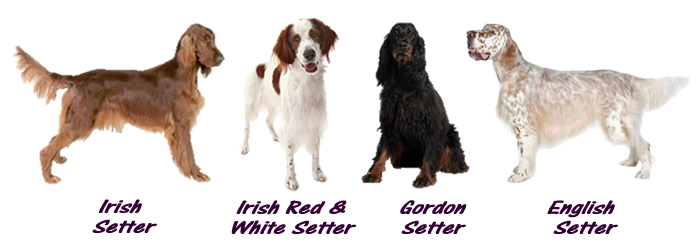
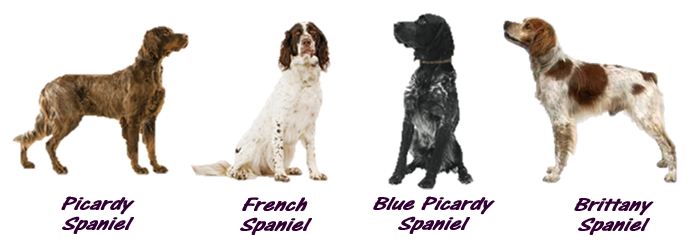
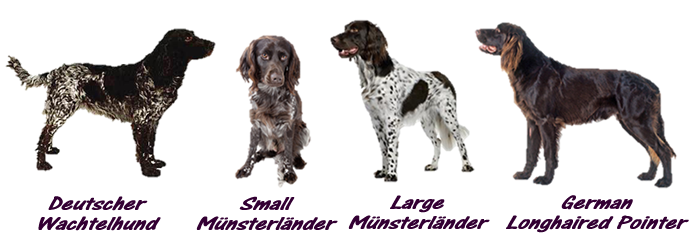
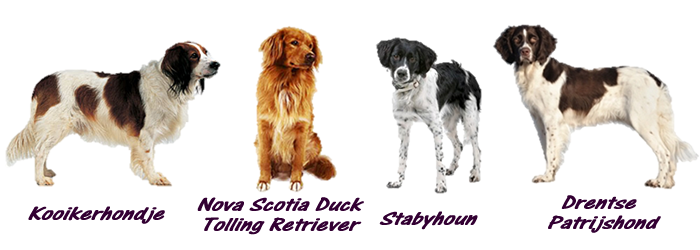
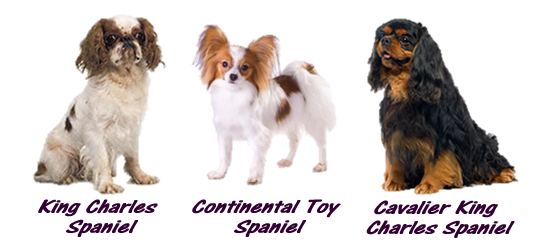

 RSS Feed
RSS Feed